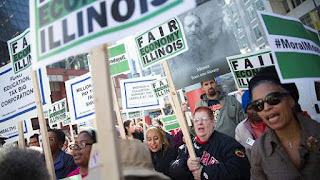A Long-Term Solution For Pensions?

Keith Ambachtsheer, Director Emeritus, International Center for Pension Management , Rotman School of Management, University of Toronto and author of The Future of Pension Management , wrote an op-ed for the Financial Times, Pension solution lies in long-term thinking : If low investment returns are here to stay, those responsible for pension plans have a choice: wring their hands or fulfill their fiduciary duty by rethinking what it means for the design of their schemes. Doing nothing is not an option. From 1871 to 2014 US equities produced an investment return, after inflation, of 6.7 per cent a year. Treasury bonds were good for 3 per cent. In contrast, the Gordon Model — which calculates prospective returns from assumptions about growth and yields — suggests much lower returns are in prospect, a real equity return of 3.6 per cent and 0.6 per cent from Treasury bonds . A recent Bank of England report, Secular Drivers of the Global Real Interest Rate , also supports this ...


